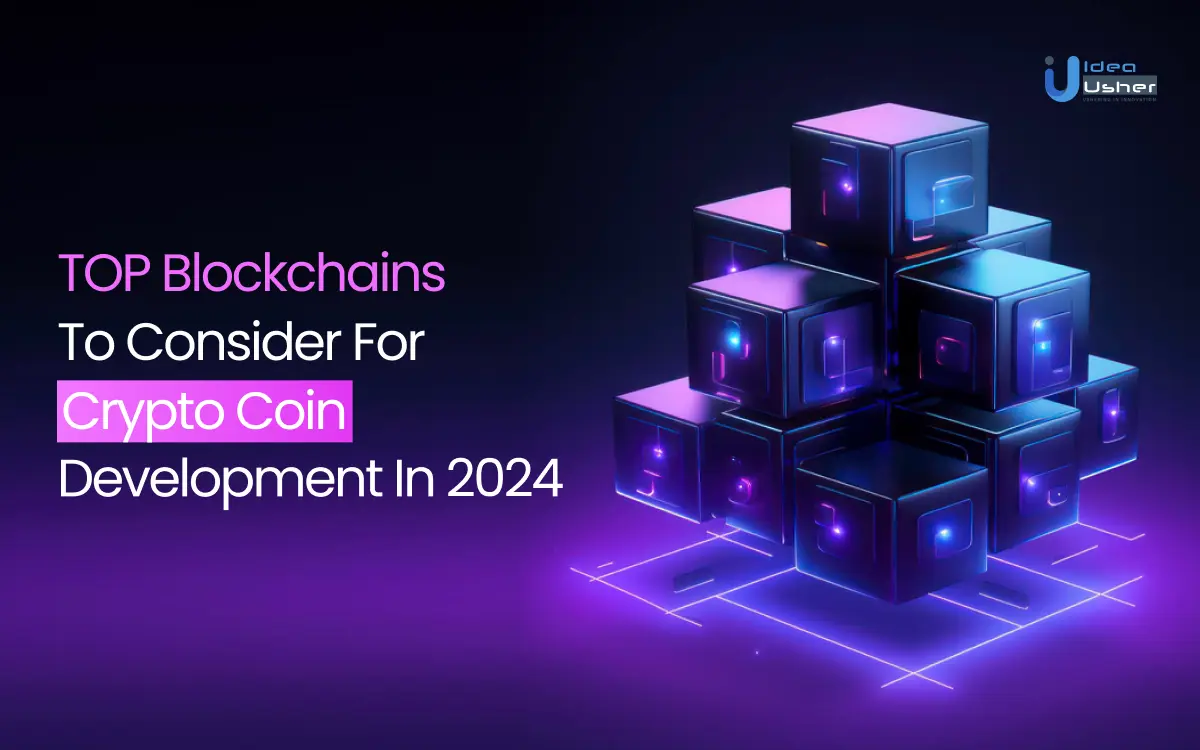
Cryptocurrencies have exploded in popularity in recent years, offering a decentralized alternative to traditional finance. Underpinning these digital currencies is blockchain technology, a revolutionary system for securely recording transactions without a central authority. This distributed ledger ensures transparency, immutability, and security – making it ideal for a vast array of applications beyond just cryptocurrencies.
But with a growing number of blockchains available, choosing the right platform is crucial for your 2024 crypto coin development project. This blog will delve into the top contenders, analyzing their strengths and weaknesses to help you select the perfect foundation for your innovative coin.
Crypto Market Overview
In early 2023, the combined market capitalization of cryptocurrencies experienced a notable uptick, bouncing back from a decline in November 2022 that was attributed to FTX. However, this resurgence proved to be short-lived, as market uncertainty surrounding a potential recession led to a subsequent decline in the summer of 2023.
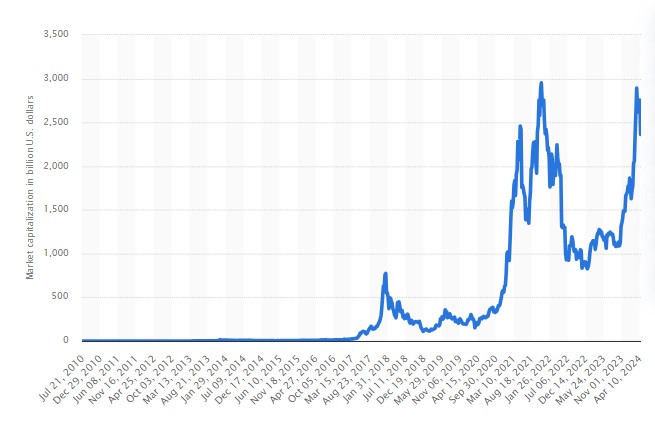
Throughout this period, Bitcoin maintained its dominance in market capitalization. Notably, Nigeria emerged as the country with the highest crypto ownership, while the United States led in Bitcoin ATMs, and Slovenia topped the list for crypto payments.
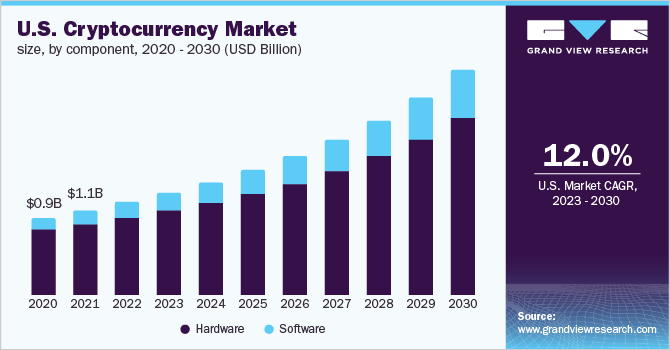
Additionally, recent developments suggest a promising outlook for the global cryptocurrency market, with projections indicating a CAGR of 12.5% from 2023 to 2030. Furthermore, the increasing prominence of Artificial Intelligence (AI) in cryptocurrency platforms is expected to drive significant advancements, prompting heightened focus from businesses on AI-based cryptocurrency technologies. On an individual user basis, the cryptocurrency market shows promise as well. The average revenue per user is estimated to be USD 61.80 in 2024.
Furthermore, user adoption within the cryptocurrency market is expected to climb steadily, with the number of users reaching an estimated 992.5 million by 2028. This signifies a growing global interest in cryptocurrencies and related technologies.
Importance Of Choosing The Optimal Blockchain For Crypto Coin Development
Selecting the appropriate blockchain for crypto coin development is a critical decision that can significantly influence the success and sustainability of your project. Here’s an expanded breakdown of why choosing the right blockchain is crucial:
1. Alignment With Project Goals:
The chosen blockchain must align closely with the specific objectives and use cases of your crypto coin. Whether it’s facilitating smart contracts, ensuring high-speed transactions, or supporting complex decentralized applications, the blockchain you select should be tailored to meet the unique requirements of your project.
2. Scalability:
As your crypto coin gains traction and attracts a growing user base, scalability becomes a critical factor. Opting for a blockchain that can handle increasing transaction volumes without sacrificing speed or incurring exorbitant fees is essential for ensuring the long-term viability and success of your coin.
3. Security:
Security is paramount in the realm of cryptocurrencies. A robust blockchain architecture with stringent security measures is imperative for safeguarding your coin against potential threats such as hacking, fraud, and unauthorized access. Prioritizing security instills trust and confidence among users, bolstering the credibility of your project.
4. Development Experience:
The availability of development tools, resources, and a supportive developer community can significantly influence the efficiency and effectiveness of the coin development process. Opting for a blockchain with a well-established ecosystem and a large developer community streamlines the development journey, enabling smoother implementation and faster iteration of your project.
5. Community And Adoption:
A vibrant and engaged blockchain community fosters innovation, collaboration, and widespread adoption of projects built on the platform. Choosing a blockchain with a thriving community increases the visibility and exposure of your coin, potentially accelerating its adoption and market penetration.
6. Sustainability:
With growing concerns about the environmental impact of blockchain technology, sustainability has emerged as a crucial consideration. Opting for a blockchain platform with a focus on energy efficiency and sustainability not only aligns with ethical principles but also enhances the attractiveness of your project to environmentally conscious users and investors.
7. Interoperability:
The blockchain’s interoperability with other platforms and networks is essential for seamless integration within the broader ecosystem. Ensuring compatibility with decentralized exchanges (DEXs), lending platforms, and liquidity protocols enhances the versatility and utility of your crypto coin.
8. Purpose And Use Case:
Defining the purpose and use case of your crypto coin development is akin to setting a clear destination for your journey. Different blockchains are purpose-built for various decentralized applications (dApps), making alignment with your project’s goals essential.
9. Cost Factors:
The cost of using the blockchain platform should also be considered. Opting for a blockchain that offers cost-effective solutions without compromising on performance and security is vital for maximizing the value of your crypto coin development efforts.
The Importance Of Sustainability In Crypto Coin Development
Sustainability has emerged as a crucial consideration, driven by various factors highlighting its importance in cryptocurrency development. Here is why it is so significant:
1. Environmental Awareness:
Traditional cryptocurrency mining and transactions consume a lot of energy, which can harm the environment. As societies become more aware of climate change, there’s a growing demand for sustainable blockchain solutions to reduce carbon emissions and preserve natural resources.
2. Ethical Responsibility:
Sustainable crypto coin development promotes fair economic practices and social responsibility. By minimizing environmental harm and ensuring everyone can participate in the crypto world fairly, sustainable initiatives uphold important values like fairness and equality.
3. Regulatory Compliance:
Governments are starting to regulate cryptocurrency operations to protect the environment. Some places now require crypto projects to use renewable energy sources for mining. Following sustainable practices not only helps meet regulations but also avoids negative attention.
4. Long-term Success:
Sustainability isn’t just a passing trend but a key factor in a crypto coin’s long-term success. By focusing on sustainability, crypto projects can build trust and credibility with users and investors, which is essential for long-term growth.
5. Community Engagement:
Sustainable crypto initiatives can bring communities together to work towards common environmental goals. By involving users in sustainability efforts, crypto projects can tap into the collective power of their communities to make a positive impact.
6. Innovation:
Sustainability in crypto coin development drives innovation and technological progress. By encouraging the development of eco-friendly solutions, crypto projects can pioneer new technologies that benefit both the industry and the environment.
7. Transparency:
Cryptocurrencies and blockchain technology promote transparency and accountability. By using blockchain’s transparent ledger, crypto projects can show they’re committed to sustainability and hold themselves accountable to users, investors, and regulators.
10 Best Optimal Blockchain Platforms For Crypto Development In 2024
Here are some of the top blockchain platforms to consider for crypto coin development in 2024:
1. Avalanche
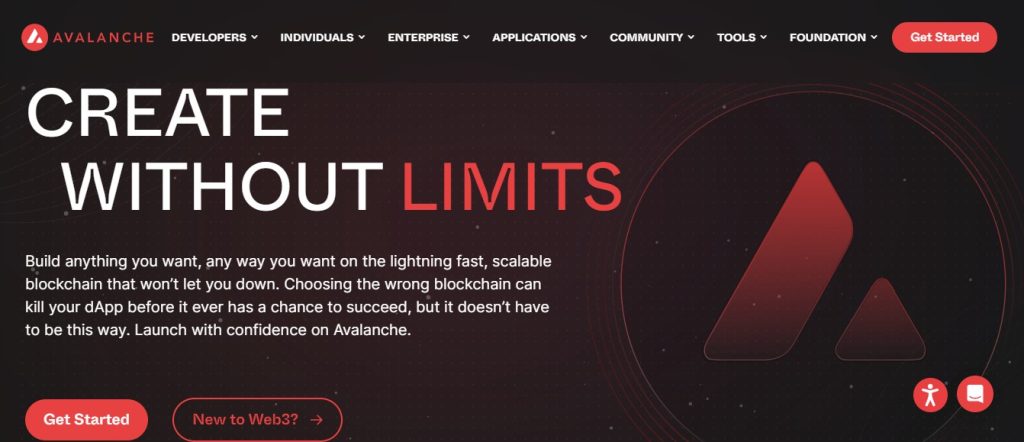
Avalanche emerges as a potent solution for scalable cryptocurrency development. It presents unique features that address scalability challenges encountered by traditional blockchains. Here’s why Avalanche is a compelling option:
1.1. Proof-Of-Stake Consensus With High Throughput:
Avalanche adopts a novel proof-of-stake consensus mechanism, achieving significantly faster transaction processing compared to traditional PoS systems. This high throughput empowers developers to create cryptocurrencies capable of handling a large volume of transactions without compromising speed.
1.2. Secure And Decentralized Network:
Despite its high throughput, Avalanche places a paramount emphasis on security. Leveraging a unique Snowman consensus protocol, the platform ensures the network remains resilient to malicious attacks. This balance between speed and security fosters trust in cryptocurrencies built on Avalanche.
1.3. Scalable Architecture:
Avalanche’s architecture is meticulously designed for scalability, enabling seamless accommodation of an ever-growing number of users and transactions. This scalability feature is crucial for cryptocurrencies aiming for widespread adoption and sustained growth.
1.4. Interoperability With Ethereum Virtual Machine (EVM):
Avalanche offers compatibility with the Ethereum Virtual Machine (EVM), facilitating easy deployment of cryptocurrencies for developers familiar with Ethereum. This interoperability promotes innovation and leverages the extensive pool of Ethereum developers.
For developers seeking a high-throughput, secure, and scalable platform to build their cryptocurrencies, Avalanche stands out with its innovative approach to blockchain technology.
2. Polygon

Polygon (MATIC) emerges as a standout layer-two scaling solution for the Ethereum blockchain, addressing challenges arising from Ethereum’s widespread popularity, such as network congestion and high transaction fees. Polygon provides a faster and more cost-effective alternative, making it an ideal choice for agile crypto development. Here’s why Polygon stands out:
2.1. Sidechain Architecture:
Polygon operates as a sidechain network, processing transactions off the main Ethereum blockchain. This parallel processing significantly alleviates congestion on the Ethereum network, resulting in faster transaction speeds and lower fees for developers building cryptocurrencies on Polygon.
2.2. Seamless Interoperability:
Polygon maintains interoperability with the Ethereum blockchain, facilitating seamless asset transfer between the two networks. This compatibility allows developers to harness Ethereum’s established security and developer ecosystem while benefiting from Polygon’s scalability enhancements.
2.3. Flexible Infrastructure:
Polygon offers a range of consensus mechanisms, empowering developers to select the most suitable option for their cryptocurrency projects. This flexibility enables developers to prioritize speed and security or strike a balance between the two based on their specific requirements.
2.4. Flourishing Developer Community:
Polygon boasts a rapidly growing developer community, fostering innovation and collaboration. This active community provides developers with access to extensive resources, tools, and support for building new cryptocurrencies on the Polygon network.
For developers seeking a swifter and more cost-effective alternative for cryptocurrency development while retaining Ethereum’s security and ecosystem benefits, Polygon presents a compelling solution.
3. Hyperledger Fabric
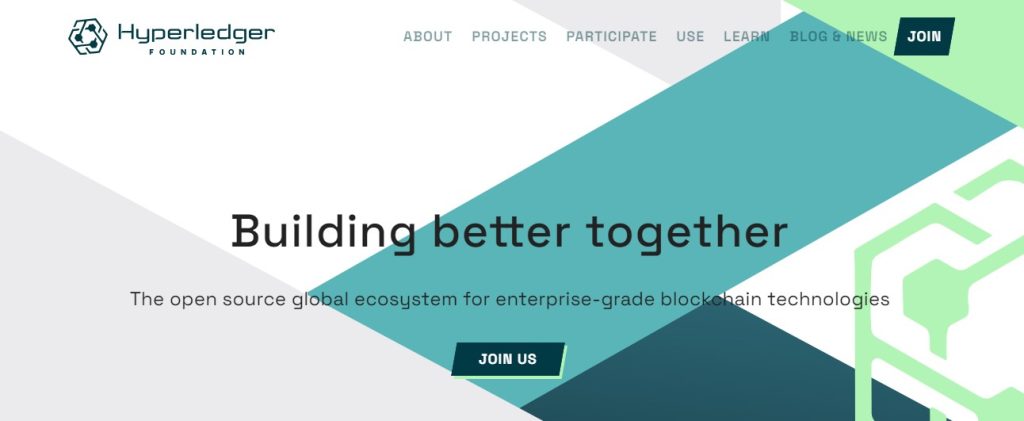
When exploring blockchain platforms for cryptocurrency development, one unique option to consider is Hyperledger Fabric. Unlike widely accessible blockchains such as Ethereum, Hyperledger Fabric operates as a permissioned network customized for specific industry applications. Developed by the Linux Foundation, this framework caters to businesses seeking a secure and scalable platform for creating their custom digital currencies.
The appeal of Hyperledger Fabric for enterprise cryptocurrency development lies in several key advantages:
3.1. Modular Structure:
Hyperledger Fabric features a modular architecture, allowing businesses to customize components like consensus mechanisms and peer permissions. This adaptability empowers companies to shape the platform according to their specific needs and regulatory standards.
3.2. Privacy Emphasis:
Unlike public blockchains, where all transactions are visible, Hyperledger Fabric prioritizes privacy. Transactions are only shared with authorized participants, safeguarding sensitive data and trade secrets. This aspect is particularly crucial for enterprises handling confidential information.
3.3. Seamless Integration:
Hyperledger Fabric seamlessly integrates with existing enterprise infrastructure, enabling businesses to leverage their current IT investments. This smooth integration minimizes disruptions and simplifies the development process for new cryptocurrencies.
3.4. Consortium Governance:
Operating under a consortium governance model, Hyperledger Fabric promotes collaboration among member organizations. This collaborative approach ensures the platform evolves to meet the diverse needs of different industries, fostering long-term stability and growth.
While not customized for public cryptocurrencies, Hyperledger Fabric offers a robust solution for businesses seeking a secure and permissioned platform to develop their digital assets.
4. Ethereum
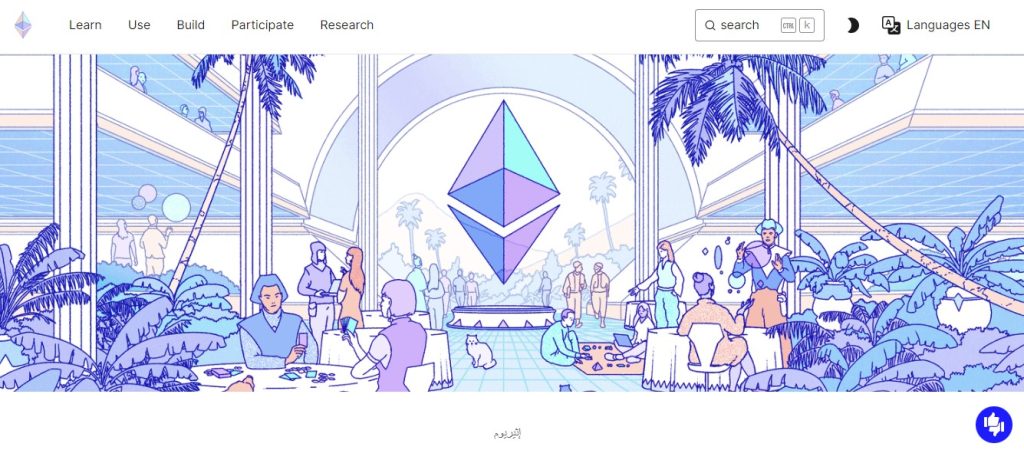
When discussing blockchain platforms for cryptocurrency development, Ethereum inevitably stands out. As the pioneering and most widely adopted smart contract platform, Ethereum has been instrumental in the proliferation of cryptocurrencies. Any cryptocurrency development firm would naturally gravitate towards building on Ethereum due to its multifaceted appeal. Ethereum’s solidity programming language and Ethereum Virtual Machine (EVM) serve as a sturdy foundation for developers to craft decentralized applications (dApps) and tokens. Ethereum is highly regarded for cryptocurrency development for several compelling reasons:
4.1. Established Ecosystem:
Ethereum enjoys the distinction of being the inaugural blockchain platform to achieve widespread adoption and foster a thriving developer community. This achievement has cultivated a diverse ecosystem of tools, resources, and libraries, streamlining the development process on Ethereum. The abundance of wallets, development frameworks, and third-party integrations simplifies the creation and deployment of cryptocurrencies on the platform.
4.2. Network Effect:
Ethereum benefits from a robust network effect, a pivotal advantage in cryptocurrency development. The platform boasts a substantial user base, an engaged community, and a well-established infrastructure encompassing exchanges, wallets, and decentralized applications. This network effect amplifies the visibility, liquidity, and market potential of cryptocurrencies built on Ethereum. A cryptocurrency development firm can leverage this pre-existing user base and capitalize on the platform’s widespread popularity to propel their projects forward.
4.3. Interoperability:
Ethereum’s adherence to open standards and compatibility with other blockchain platforms bolster its suitability for cryptocurrency development. Ethereum-based tokens, including ERC-20, ERC-721, and ERC-1155, have emerged as industry standards, facilitating seamless interoperability across different projects and platforms. This interoperability fosters the integration and exchange of tokens, augmenting the overall utility and liquidity of cryptocurrencies developed on Ethereum.
4.4. Recent Ethereum 2.0 Upgrade:
Ethereum underwent a significant overhaul with the Ethereum 2.0 upgrade, aimed at addressing the scalability and energy efficiency challenges inherent in the current Ethereum network. The transition from a proof-of-work (PoW) to a proof-of-stake (PoS) consensus mechanism is poised to enhance transaction throughput and mitigate transaction costs substantially. This upgrade heralds even greater scalability and efficiency for cryptocurrency development on the Ethereum platform.
4.4 Smart Contract Capability:
Ethereum revolutionized the concept of smart contracts, which are self-executing agreements embedded with predefined conditions directly within the code. Smart contracts facilitate the creation of decentralized applications (dApps) and empower developers to implement intricate logic for cryptocurrencies, encompassing token issuance, distribution, and governance. A cryptocurrency development company is proficient in Ethereum’s solidity programming language, and Ethereum Virtual Machine (EVM) possesses the tools to develop and execute smart contracts effectively.
5. XRP Ledger
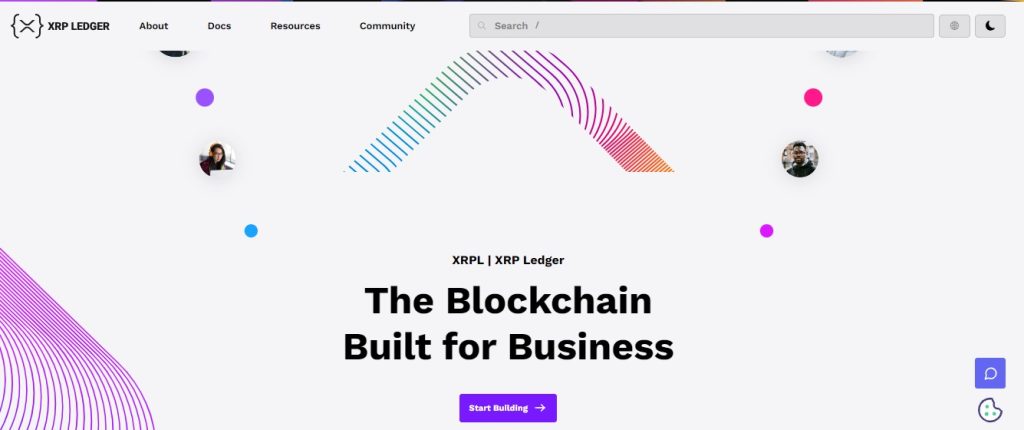
Stepping beyond the permissioned blockchains and scaling solutions, XRP Ledger (XRPL) emerges as a robust contender for cryptocurrency development. Created by Ripple, XRPL prioritizes speed, efficiency, and low transaction costs, making it an attractive option for diverse crypto projects. Here’s why XRPL stands out:
5.1. Impressive Transaction Throughput:
XRPL boasts remarkable transaction processing speed and is capable of handling thousands of transactions per second. This rapid throughput ensures swift settlement times and minimizes delays for users interacting with cryptocurrencies built on XRPL.
5.2. Minimal Transaction Fees:
Unlike some blockchains burdened by high transaction fees, XRPL offers transactions at a fraction of a penny. This minimal cost structure makes XRPL particularly suitable for developing cryptocurrencies intended for micropayments or applications requiring frequent transactions.
5.3. Open-Source And Decentralized:
Operating as an open-source, decentralized public ledger, XRPL fosters transparency and trust. Its lack of central control enables developers to customize and innovate freely while users benefit from enhanced security and reliability.
5.4. Established Ecosystem And Developer Resources:
XRPL boasts a well-established developer community supported by a growing ecosystem of tools and resources. This extensive support simplifies the development process for new cryptocurrencies on XRPL, enhancing accessibility and innovation.
While XRPL may not fit every cryptocurrency project, its emphasis on speed, affordability, and decentralization positions it as a robust choice for developers seeking a reliable and efficient platform.
6. Cardano
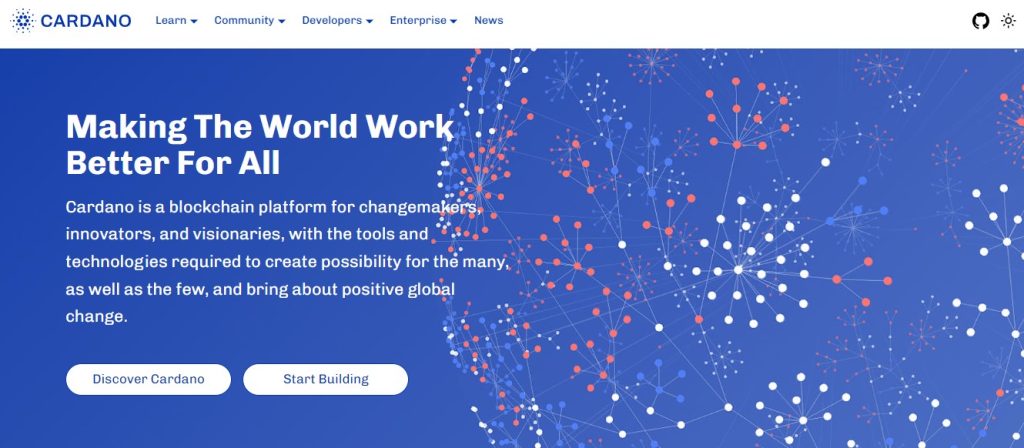
Cardano stands out as a suitable platform for cryptocurrency development due to its scientific approach, scalability, sustainability, proof-of-stake consensus, focus on security, governance model, and expanding ecosystem. Its commitment to peer-reviewed research, formal verification, and community engagement creates a secure, efficient, and reliable environment for developers to create innovative cryptocurrencies. Key reasons why Cardano is favored for crypto development include:
6.1. Scientific Approach And Peer-Reviewed Research:
Cardano distinguishes itself by adopting a scientific approach to blockchain development. Its protocols undergo rigorous peer review by academic experts, ensuring a solid foundation focused on security, scalability, and sustainability.
6.2. Scalability And Sustainability:
Cardano addresses scalability and sustainability challenges through its layered architecture. The settlement layer focuses on financial transactions and security, while the computation layer handles smart contract execution. This separation enhances scalability while maintaining security and minimizing energy consumption.
6.3. Proof-Of-Stake Consensus:
Cardano utilizes a proof-of-stake (PoS) consensus mechanism called Ouroboros, which is secure, efficient, and environmentally friendly. ADA holders participate in block validation, reducing reliance on energy-intensive mining activities and offering faster transaction confirmations with a lower carbon footprint.
6.4. Formal Verification And Enhanced Security:
Cardano emphasizes formal verification to analyze and verify smart contracts and protocols rigorously. This approach identifies and mitigates vulnerabilities before deployment, enhancing security and reliability and reducing the risk of exploits and hacks.
6.5. Governance And Decentralization:
Cardano features an on-chain governance system enabling ADA holders to participate in protocol upgrades. This democratic approach fosters transparency, accountability, and adaptability, ensuring the platform evolves to meet users’ needs.
6.6. Growing Ecosystem And Partnerships:
Cardano actively expands its ecosystem through partnerships with organizations, governments, and academic institutions. These collaborations provide opportunities for research, adoption, and further development, enhancing Cardano’s potential for cryptocurrency development and adoption.
7. Sei
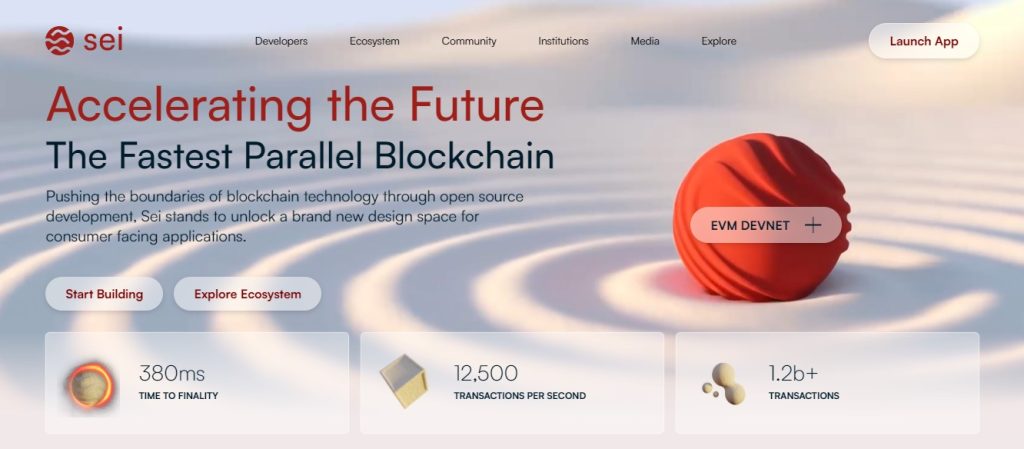
Sei has emerged with a focus on transforming decentralized trading. Unlike many general-purpose blockchains, Sei is an application-specific blockchain explicitly crafted for developing high-speed, low-latency trading applications. Here’s why Sei is an ideal choice for crafting high-performance decentralized exchanges (DEXs):
7.1. Twin-Turbo Consensus Mechanism:
Sei introduces a cutting-edge consensus mechanism known as “Twin-Turbo,” significantly reducing block finality times. This rapid finality ensures near-instantaneous transaction settlement, a critical factor for the seamless operation of DEXs built on Sei.
7.2. Built-In Order Book And Matching Engine:
Sei goes beyond merely providing a blockchain infrastructure. The platform offers a built-in order book and matching engine, streamlining the development process for DEX creators. Developers can leverage these features to build efficient and scalable trading platforms.
7.3. Scalability For High-Frequency Trading:
Sei’s architecture is purposefully optimized for high-frequency trading (HFT) strategies. The platform can handle a massive volume of transactions per second, ensuring DEXs built on Sei can accommodate a large user base and rapid trading activity.
7.4. Interoperable With Cosmos Ecosystem:
Sei is built on the Cosmos SDK, fostering interoperability with other blockchains within the Cosmos ecosystem. This interoperability empowers DEXs on Sei to potentially tap into a broader pool of liquidity and assets.
7.5. Focus On Security And Decentralization:
Despite its emphasis on speed, Sei maintains a robust focus on security and decentralization. The platform leverages a secure consensus mechanism and the security features inherent in the Cosmos ecosystem.
For developers aiming to build decentralized exchanges or other trading applications demanding high-speed execution and low latency, Sei offers a revolutionary platform meticulously designed to meet these exact requirements.
8. Binance Smart Chain (BSC)
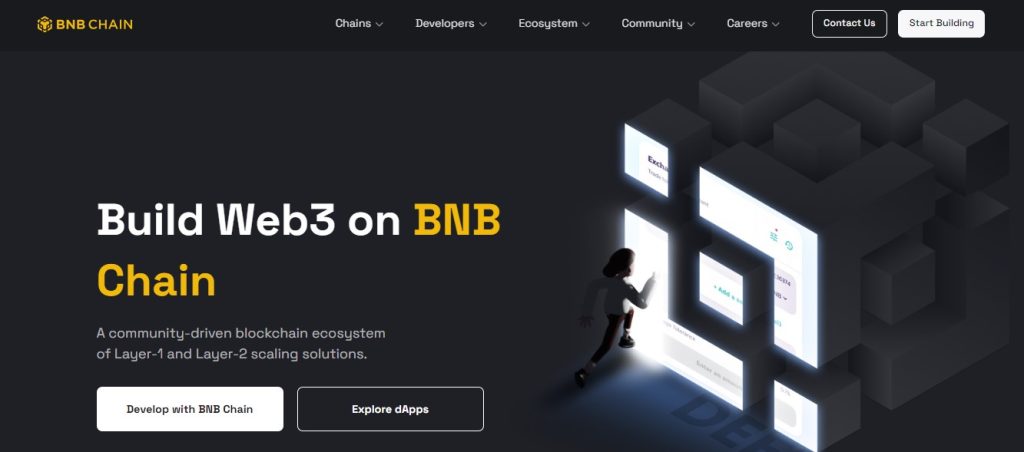
Binance Smart Chain, introduced by the cryptocurrency exchange Binance, has emerged as a formidable contender in the blockchain platform arena. BSC seamlessly integrates with the Ethereum Virtual Machine, facilitating Ethereum developers’ transition to BSC with minimal adjustments. One of BSC’s primary advantages lies in its economical transaction fees, offering a financially efficient option for both developers and users. Binance Smart Chain (BSC) has garnered widespread popularity as a blockchain platform, prompting crypto development companies to consider it for the following reasons:
8.1. Ethereum Compatibility:
BSC seamlessly aligns with the Ethereum Virtual Machine (EVM), enabling developers to effortlessly migrate their Ethereum-based projects to BSC without significant alterations. This compatibility allows developers to leverage their existing expertise in Ethereum’s programming languages, tools, and frameworks, ensuring a seamless transition for Ethereum developers venturing into BSC development.
8.2. Low Transaction Fees:
A standout feature of BSC is its markedly lower transaction fees compared to Ethereum. Ethereum’s network congestion and high gas fees have raised concerns among developers and users, particularly for projects involving frequent transactions or microtransactions. BSC offers a compelling alternative with substantially reduced transaction fees, presenting an appealing choice for developers and users conscious of cost considerations.
8.3. Binance Ecosystem Integration:
BSC seamlessly integrates with the broader Binance ecosystem, encompassing the Binance exchange, Binance DEX, and other Binance-owned platforms and services. This integration grants BSC projects easy access to an extensive user base, liquidity, and the potential for a token listing on Binance Exchange, one of the largest and most renowned cryptocurrency exchanges globally. Furthermore, the Binance ecosystem provides additional resources and support, facilitating developers in promoting and expanding their projects.
8.4. Fast Transaction Confirmation:
BSC employs a delegated proof-of-stake (DPoS) consensus mechanism, enabling faster block confirmation times compared to Ethereum’s proof-of-work (PoW) consensus. Consequently, this leads to swifter transaction finality, facilitating the expedited and more responsive operation of decentralized applications on the BSC platform.
8.5. Decentralized Finance (DeFi) and Yield Farming:
BSC has witnessed substantial growth within the decentralized finance sector, boasting numerous DeFi protocols and yield farming opportunities. BSC’s appeal for DeFi projects is partly attributed to its low transaction fees and expedited transaction confirmations, rendering it more accessible for users to engage in various DeFi activities such as trading, lending, and yield farming.
9. Solana
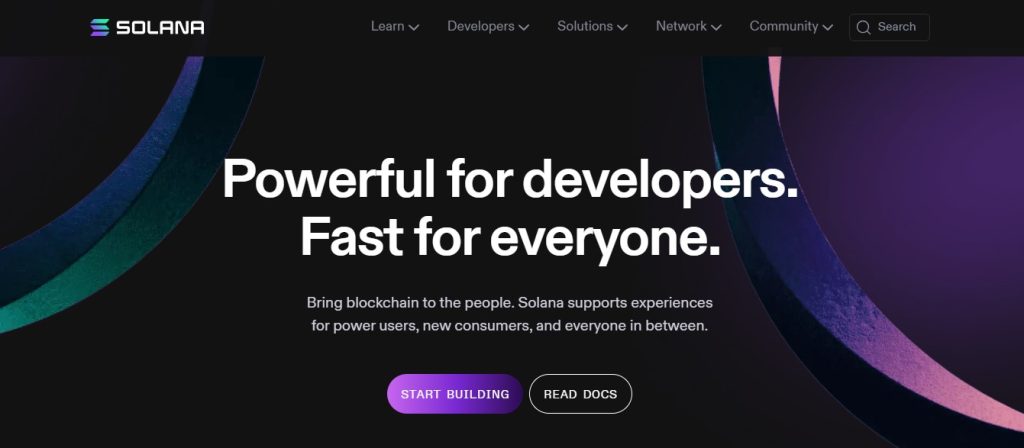
Solana has caught the eye in 2023 due to its impressive scalability and rapid transaction processing. Solana’s unique Proof of History (PoH) consensus mechanism enables fast transactions and reduces fees significantly, making it an attractive choice for projects with high transaction volumes. Solana’s appeal in the cryptocurrency development sphere stems from several factors:
9.1. Scalability And Efficiency:
Solana is purpose-built to handle scalability issues common to many blockchain platforms. Its innovative blend of technologies allows it to process a large number of transactions per second, making it ideal for projects requiring swift and scalable transaction processing.
9.2. Affordable Transactions:
Solana keeps transaction fees low, unlike some other platforms where fees can skyrocket during peak times. This affordability is particularly beneficial for projects involving frequent transactions.
9.3. Developer-Friendly Tools:
Solana offers user-friendly tools like Solana Studio and Command Line Interface (CLI), simplifying smart contract deployment and network interaction. Its support for languages like Rust makes it appealing to developers seeking a robust development experience.
9.4. Growing Ecosystem:
Solana’s ecosystem is rapidly expanding, attracting projects from diverse sectors like DeFi, NFTs, and gaming. This growth provides developers with collaboration opportunities and enhances the utility of cryptocurrencies built on Solana.
9.5. Interoperability:
Solana is designed to be compatible with other blockchains, allowing seamless integration and data exchange. Its compatibility with Ethereum technologies facilitates easy migration of projects and promotes cross-chain collaborations.
10. Polkadot

Polkadot is an advanced blockchain platform focusing on interoperability and scalability. Its relay chain and parachain architecture allow multiple blockchains to connect and operate together, creating a connected and scalable environment. This interoperability facilitates smooth asset and data transfer across different chains, promoting compatibility between them. Here are some features of Polkadot that make it an appealing choice for experienced cryptocurrency development firms:
10.1. Interoperability:
The design of Polkadot prioritizes interoperability, enabling various blockchains, or parachains, to interact seamlessly. This boosts collaboration between different chains, expanding the usefulness of cryptocurrencies and creating a cohesive ecosystem.
10.2. Scalability And Flexibility:
Polkadot’s architecture tackles scalability issues by processing multiple transactions simultaneously. Additionally, developers can use its Substrate framework to tailor blockchains according to specific needs, including consensus mechanisms and governance models.
10.3. Governance And Adaptability:
Polkadot employs an innovative governance model that allows for upgrades without hard forks. Token holders can propose and vote on changes, ensuring the platform evolves over time to meet user requirements in a decentralized manner.
10.4. Security And Trustworthiness:
Polkadot emphasizes security through its robust consensus mechanism. Validators are selected based on reputation, stake, and community support, ensuring a reliable and secure network, which is crucial for building trust in cryptocurrency transactions.
10.5. Expanding Ecosystem And Collaborations:
Polkadot’s ecosystem is growing rapidly, attracting projects and developers from various sectors like DeFi and NFTs. This diversity offers developers opportunities for collaboration, integration, and interoperability, contributing to the platform’s potential for cryptocurrency adoption.
Conclusion
The success of your 2024 crypto project hinges on the right blockchain. Each platform offers unique strengths. Avalanche excels in scalability, while Sei prioritizes speed, and Cardano champions sustainability. Developers can also leverage platforms like Polygon or Binance Smart Chain for innovative solutions in areas like interoperability and security. Choosing a blockchain that aligns with your project’s goals is key to building robust and groundbreaking cryptocurrencies. This focus on aligning goals reflects the industry’s commitment to responsible practices and long-term success. By staying informed and making strategic blockchain choices, developers can drive meaningful impact in the ever-evolving world of decentralized finance.
Looking to Develop a Platform Or a Project on Blockchain?
Our seasoned developers utilize technology to craft bespoke blockchain solutions that can perfectly align with your specific needs. We offer a comprehensive suite of services, encompassing every stage of your project journey – from initial ideation and development to seamless deployment and ongoing support, ensuring that your project is successful from start to finish. Reach out to us today and unlock the full potential of blockchain and crypto for your business growth.
FAQ
1. Which blockchain should I choose?
There’s no single “best” blockchain. The ideal choice depends on your project’s needs. Consider factors like scalability, security, transaction fees, and existing developer tools. Research popular options like Ethereum, Solana, Avalanche, and Cardano to find the best fit.
2. Which blockchain is the best to build on?
The “best” blockchain depends on your project’s priorities. Ethereum offers a mature ecosystem and smart contracts, while Solana boasts high transaction speeds. Cardano prioritizes security and sustainability, and Avalanche excels in scalability. Research each option to find the optimal balance for your project.
3. What is the most useful blockchain?
The “most useful” blockchain depends on your intended application. If you need smart contracts and established infrastructure, Ethereum might be ideal. For high-speed transactions and low fees, consider Solana. Avalanche could be the answer to a focus on security and scalability. Research different blockchains to find the one that best suits your project’s purpose.
4. What is the best-performance blockchain?
Currently, several blockchains compete for the “best performance” title. Solana stands out for its lightning-fast transaction speeds and low fees. Avalanche boasts impressive scalability for handling large user bases. However, both are still under development. Research these and other options to find the blockchain that prioritizes the performance metrics most crucial for your project.










Rebecca Lal